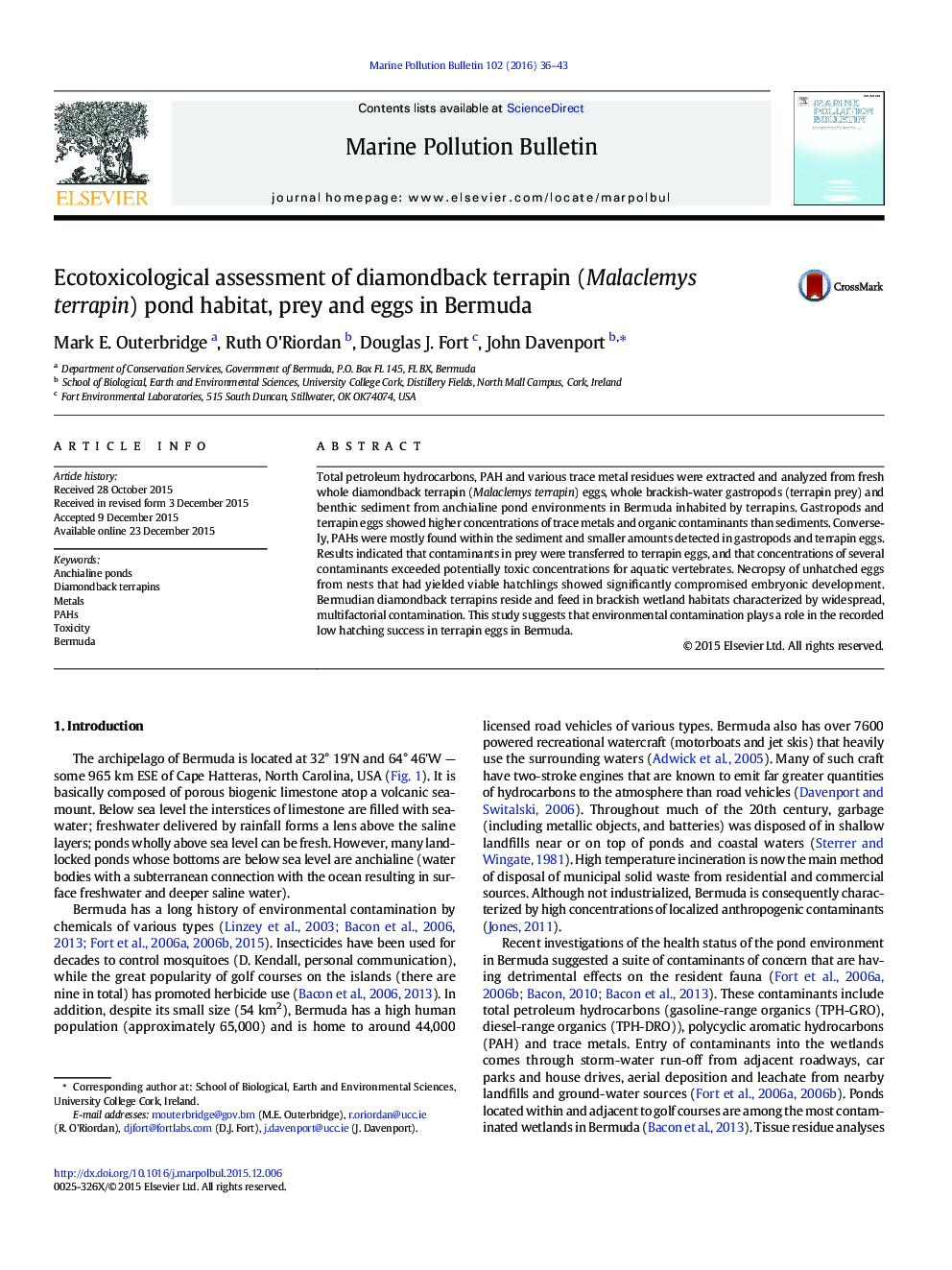| Article ID | Journal | Published Year | Pages | File Type |
|---|---|---|---|---|
| 6356293 | Marine Pollution Bulletin | 2016 | 8 Pages |
â¢A small population of diamondback terrapins lives on Bermuda in anchialine pools.â¢Pool sediments are contaminated by trace metals, PAHs and petroleum hydrocarbons.â¢Contaminants accumulate in benthic gastropods, the main food of diamondbacks.â¢Terrapin eggs accumulate contaminants via adult females and their diet.â¢Environmental contamination may adversely affect embryonic development.
Total petroleum hydrocarbons, PAH and various trace metal residues were extracted and analyzed from fresh whole diamondback terrapin (Malaclemys terrapin) eggs, whole brackish-water gastropods (terrapin prey) and benthic sediment from anchialine pond environments in Bermuda inhabited by terrapins. Gastropods and terrapin eggs showed higher concentrations of trace metals and organic contaminants than sediments. Conversely, PAHs were mostly found within the sediment and smaller amounts detected in gastropods and terrapin eggs. Results indicated that contaminants in prey were transferred to terrapin eggs, and that concentrations of several contaminants exceeded potentially toxic concentrations for aquatic vertebrates. Necropsy of unhatched eggs from nests that had yielded viable hatchlings showed significantly compromised embryonic development. Bermudian diamondback terrapins reside and feed in brackish wetland habitats characterized by widespread, multifactorial contamination. This study suggests that environmental contamination plays a role in the recorded low hatching success in terrapin eggs in Bermuda.
